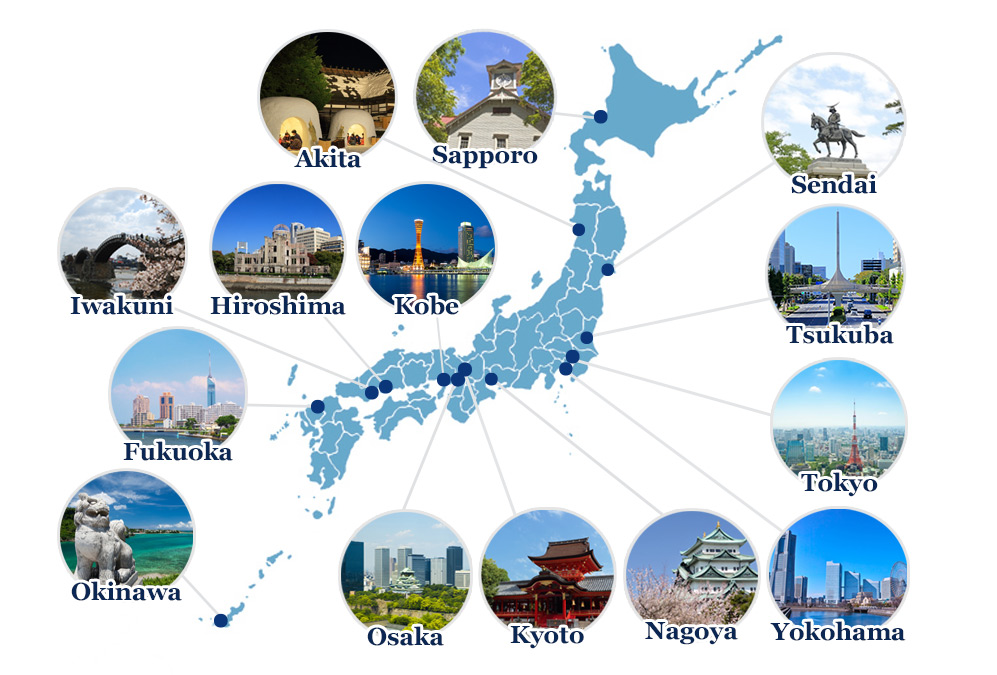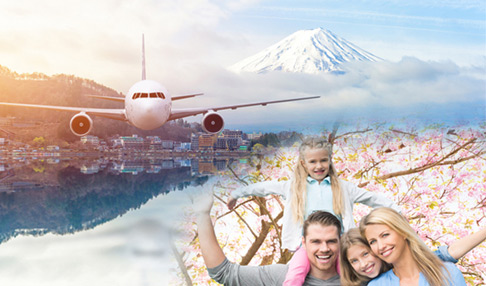Japan Destination Guide for Expats
Our Destination Guides for major cities in Japan, include, but are not limited to, brief overviews of Tokyo, Yokohama, Nagoya, Osaka, and Kobe with pictures and information on expat-related facilities.
We hope that the provided information will be a valuable resource for expats coming to or currently residing in Japan, as well as the HR department of foreign companies.

General Information about Japan
Area:
The total land area of Japan is 377,915 square kilometers (145,914 square miles.) The country of Japan is consists of the four major islands of Hokkaido, Honshu, Shikoku, and Kyushu. Also included as land owned by Japan, are several thousand smaller islands.
Todofuken (Prefectures):
47 regional divisions as below:
1 to (Tokyo), 1 do (Hokkaido), 2 fu (Kyoto and Osaka), and 43 ken (Prefectures) Prefectures are similar to “states” or “provinces” in North America or “counties” in the UK.
Population:
The population of Japan is 124.93 million, as of June 1st 2022, according to the Ministry of Internal Affairs and Communications. The average household size is 2.13 persons, as of January 1st 2021, according to the Ministry of Internal Affairs and Communications.
Climate in Japan:
- There are Four seasons: spring, summer, fall, and winter
- The longitudinally stretched shape of Japan covers climate ranges from sub-arctic to sub-tropical
- It suffers from an extremely humid rainy season (tsuyu), primarily in June, as well as many typhoons, from August to October
- Despite severe seasonal changes, Japan’s natural splendor attracts many foreign visitors
Language:
The Japanese spoken language, when written, is represented by ideograms called “kanji” (meaning Chinese characters,) hiragana, and katakana. Kanji is used for words, hiragana for the phonetic transcription of words or parts of speech, and katakana primarily for transliterating foreign words or names. While different dialects are spoken in various areas, the dialect of Tokyo is considered the basic standard dialect. Japanese youths often use slang that is often combined abbreviations of common terms. Romaji (Roman letters) is the rendering of Japanese words using Latin script.
Public Safety:
According to a study compiled by the United Nations Office on Drugs and Crime (UNODC), in 2018, Japan had a homicide rate of 0.26 per 100,000 people. In comparison, U.S.A. had a homicide rate of 5.0, U.K. had 1.2 and Australia had 0.9.
In 2021, Tokyo was ranked the 5th safest city in the world by the Economist Intelligence Unit according to its Safest Cities index, which looks at a variety of indicators including personal safety, infrastructure safety, health security, and digital security.
Money in Japan (Banknotes and coins):
Despite the growth of credit card use, you will still find yourself paying by cash on many occasions during your day to day life in Tokyo. Surprisingly, there are still many restaurants and stores which do not accept credit cards as a form of payment.
The official currency in Japan is Yen. There are 4 types of paper bills: ¥1,000, ¥2,000, ¥5,000, ¥10,000 and 6 types of coins.



